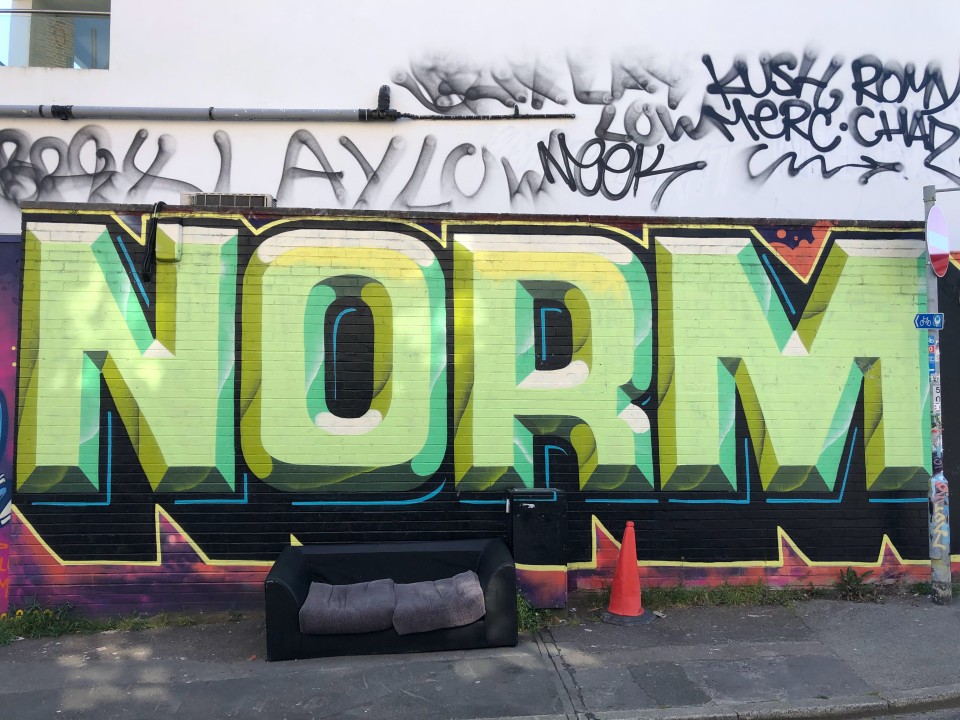As seasoned Agile coaches, we are committed to enhancing team dynamics and driving organizational success. Drawing inspiration from Ruth Wageman work in the book “Senior Leadership Teams: What It Takes to Make Them Great,” we recognize the importance of establishing clear and consistent leadership team norms. These norms, or shared expectations about behavior, lay the foundation for a high-performing leadership team that can tackle significant challenges effectively.
In a world characterized by rapid change, the role of a CEO is crucial, but the author argue that the demands on top leaders often surpass the capabilities of any one individual. Instead, CEOs increasingly turn to their senior leadership teams for support. However, forming a cohesive leadership team is not without its challenges. Many CEOs struggle as senior executives tend to prioritize their individual roles over the shared work of the top team. Without careful attention from the CEO, these high-powered managers may face difficulties in aligning their efforts to propel the organization forward, leading to disagreements about the right path forward.
The book offers practical guidance on determining whether an organization needs a senior leadership team. Drawing on a comprehensive study of over 100 top teams worldwide, the authors outline steps to create a clear and compelling purpose for the team, select the right individuals, provide necessary structure and support, and enhance team members’ competencies. The emphasis is on fostering an environment where team members not only learn from one another but also collaborate seamlessly to achieve the company’s objectives.
No matter how well-defined a team’s purpose and tasks are, it is equally essential to establish a set of operating norms that guide team interactions. These norms, or shared expectations about behavior, lay the foundation for a leadership team to tackle significant challenges effectively. However, not all norms are created equal, and it’s crucial to ensure they are clear, concise, and specific to the team and its unique circumstances.
While team norms will inevitably develop, leaving them to arise organically often leads to ineffective and counterproductive behaviors. In the absence of explicit agreements, team members may develop their own code of conduct, leading to a downward spiral of decreasing effectiveness. For instance, the acceptance of missing one meeting without consequences can quickly become the norm until it escalates to missing multiple meetings. This process erodes the team’s effectiveness and diminishes the importance of collective efforts.
Addressing and correcting these implicit norms is vital to maintaining a healthy team dynamic. By establishing explicit norms, we can prevent detrimental behaviors such as members talking over each other, disengaging during discussions, or criticizing decisions after leaving the table. Effective norms go beyond eloquent statements of team values; they are specific behavioral rules that the entire team agrees upon.
Drawing from our experience, here are four universally useful senior leadership team norms that can serve as a foundation for your team’s success:
- Commitment: Treat your role as a team member with the same level of seriousness as your individual leadership responsibilities.
- Transparency: If a matter affects more than one team member, bring it to the team table. Open and honest communication is crucial for building trust and fostering a collaborative environment.
- Participation: Welcome and value each member’s voice on issues that impact the team. Encourage active engagement to harness the diverse perspectives within the team.
- Integrity: Uphold consistency in your words and actions, whether within or outside the team. Integrity forms the bedrock of a reliable and trustworthy team dynamic.
These four universally useful norms—Commitment, Transparency, Participation, and Integrity—align seamlessly with the agile leadership principles :
- Empowering and Trusting Teams : Agile leadership is based on the belief that individuals and teams are self-organizing and capable of making good decisions when given autonomy and trust. Agile leaders empower their teams by providing a clear vision and goals, encouraging collaboration, and removing obstacles. They promote a culture of ownership, accountability, and continuous improvement.
- Embracing and Adapting to change : Agility is synonymous with flexibility and adaptability. Agile leaders embrace change as an opportunity rather than a disruption. They promote a culture of experimentation where teams are encouraged to try new approaches and learn from failures.Also, agile leaders are open to employee feedback, encourage learning, and are willing to change their minds based on new information or changing market conditions. They understand that agility is necessary for responding to evolving customer needs and a changing business climate.
- Facilitating Collaboration and Communication : Agile leadership recognizes the value of collaboration and effective communication in driving successful outcomes. Agile leaders use agile project management software where cross-functional teams work closely together, break down organizational silos, and promote a culture of shared responsibility. They encourage open and transparent communication across the organization, creating feedback loops. These leaders also emphasize the importance of sharing goals, priorities, and expectations. This helps teams align their efforts and make informed decisions.
Aligning seamlessly with Agile leadership principles, norms empower and trust teams, fostering self-organization and good decision-making.
In order to establish these norms effectively, consider the following steps:
- Define the purpose: Clearly articulate the team’s mission, vision, and goals. Understanding the team’s purpose provides a foundation for identifying the behaviors that align with its objectives.
- Identify key issues: Discuss common challenges and areas for improvement in team dynamics. Identify behaviors that hinder effective collaboration and decision-making.
- Brainstorm norms: Engage in open and honest discussions to generate a list of potential norms. Encourage all team members to contribute their ideas and perspectives.
- Refine and finalize: Evaluate the proposed norms, ensuring they are specific, clear, and actionable. Reach consensus on a set of norms that are relevant to the team’s unique circumstances.
- Communicate and reinforce: Share the agreed-upon norms with the entire team and ensure everyone understands their expectations. Regularly reinforce these norms through communication and feedback.
Here I appreciate using Management 3.0 Guiding Questions which are specifically designed for lean agile teams. These questions encourage leaders to reflect on their behaviors and practices in order to foster a more empowering, collaborative, and learning-oriented environment.
Here are some examples of Management 3.0 Guiding Questions that can be used to refine leadership team norms:
- Why do we care about being good leaders?
- Why don’t we want to stop leading our team?
- Why do we want and dedicate time and effort to projects in our organization?
- Why do we do what we do?
- How does our role impact our life and that of others?
- Why would anyone want to be led by us?
- What kind of actions characterize us?
- Think of actions we’re proud of (Find a minimum of 10)!
- Identify a person who inspires us and whom we admire. What do we like most about her/him? What specific behaviors and actions do we admire?
- What similarities or relationships do we find between the actions we’re proud of and those we admire about the person we’ve identified? (Name 6)!
We can also get inspiration from the great The Core Protocols: A Guide to Greatness , by Jim McCarthy, Michele McCarthy, and Richard Kasperowski. The authors states Core Commitments as follow :
- I commit to engage when present. To know and disclose what I want, what I think, and what I feel. To always seek effective help. To decline to offer and refuse to accept incoherent emotional transmissions. When I have or hear a better idea than the currently prevailing idea, I will immediately either propose it for decisive acceptance or rejection, and/or explicitly seek its improvement. I will personally support the best idea regardless of its source, however much I hope an even better idea may later arise, and when I have no superior alternative idea.
- I will seek to perceive more than I seek to be perceived.
- I will use teams, especially when undertaking difficult tasks.
- I will speak always and only when I believe it will improve the general results/effort ratio.
- I will offer and accept only rational, results-oriented behavior and communication.
- I will disengage from less productive situations When I cannot keep these commitments, When it is more important that I engage elsewhere.
- I will do now what must be done eventually and can effectively be done now.
- I will seek to move forward toward a particular goal, by biasing my behavior toward action.
- I will use the Core Protocols (or better) when applicable. I will offer and accept timely and proper use of the Protocol Check protocol without prejudice.
- I will neither harm — nor tolerate the harming of — anyone for his or her fidelity to these commitments.
- I will never do anything dumb on purpose.
Going back to “Senior Leadership Teams: What It Takes to Make Them Great,” the authors of the book illustrates with an example ; The Applebee’s team norms, and I often use it as example or guidance when working with leadership team in writing down their own agreements and commitments :
- Build trust – Honesty and integrity, being loyal to and defending others – even when they aren’t present, honoring commitments no matter how small, keeping no secrets, respecting others, welcoming others’ interests and questions about your area (not protecting one’s turf), collaborating, giving feedback and developing others.
- Be decisive – Taking measured risks, being innovative, admitting mistakes (recovering quickly and sharing your learnings), being courageous and taking a stand on issues.
- Be accountable – See it. Own it. Fix it
- Hold great meetings – Meeting should be well planned, with an agenda, start and end on time, and involve all attendees. Only one person should speak at the time. No sidebar conversations. Next steps and accountabilities should be summarized as the meeting closes.
- Deliver results – Members should live on commitments by demonstrating “iron will determination to make it happen”
- Demonstrate balance – Members should demonstrate and support work / life balance
- Have fun – Life is short.
By combining these norms with the book’s guidance, and the others useful tools from Agile Leadership or Management 3.0 or Core Protocols -for example with the Protocol Check habits, we can create and sustain leadership teams that learn, collaborate, and drive organizational success.
As agile coaches, let’s continue to leverage the wealth of knowledge from such resources to empower teams and leaders on their journey towards crafting effective, high-performing leadership teams.
Together, we can shape organizational cultures that thrive in the face of change and uncertainty.




